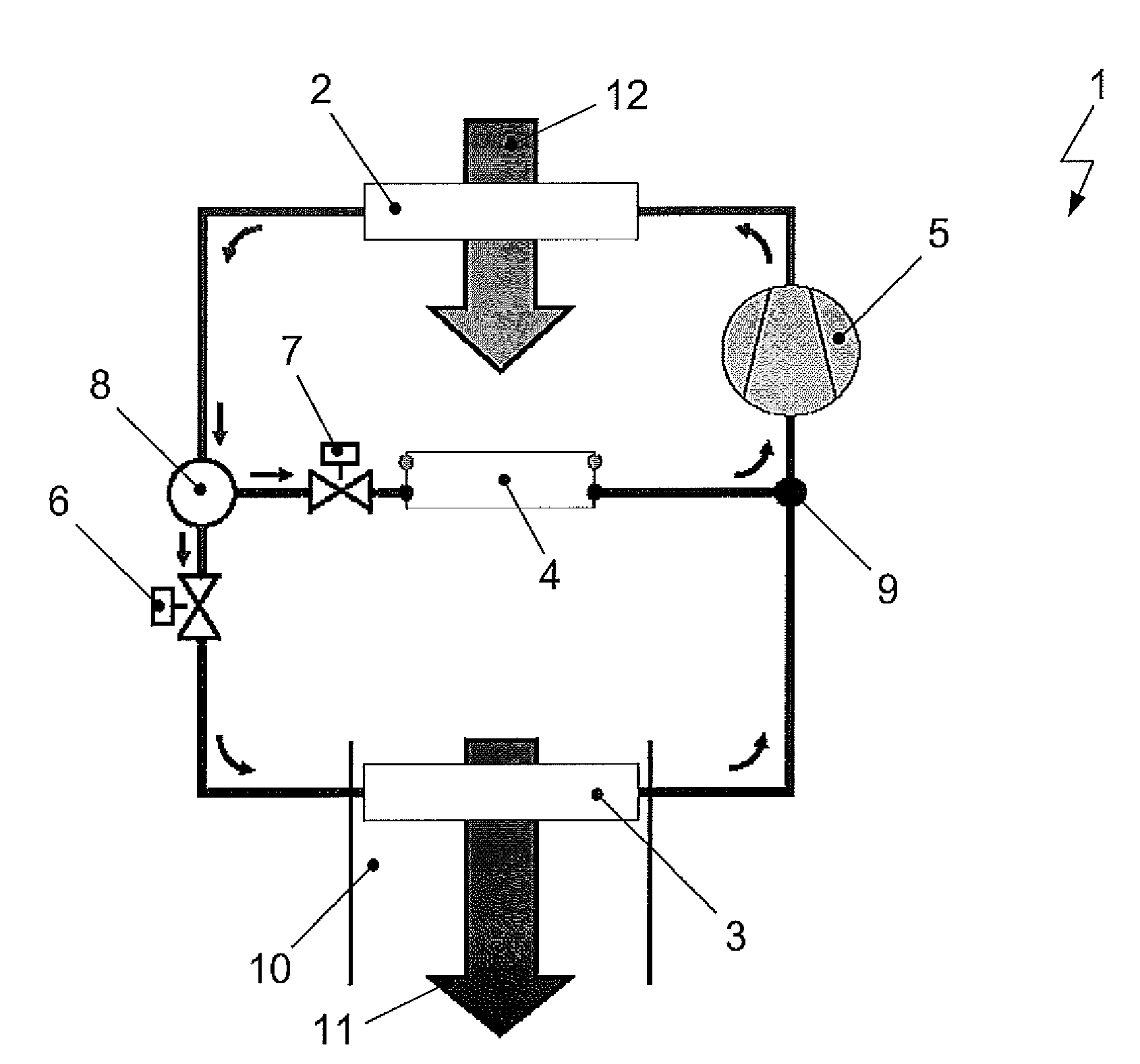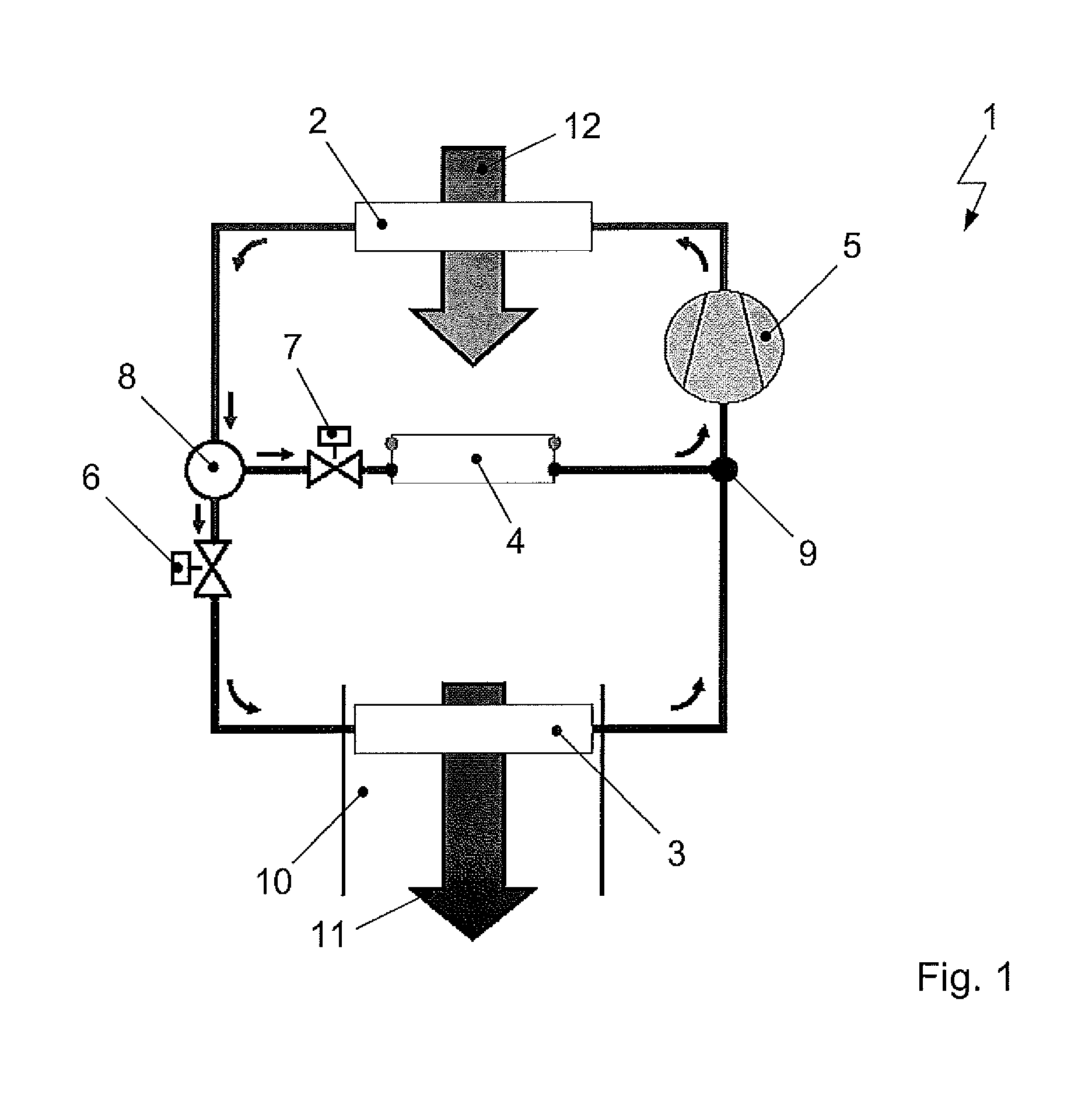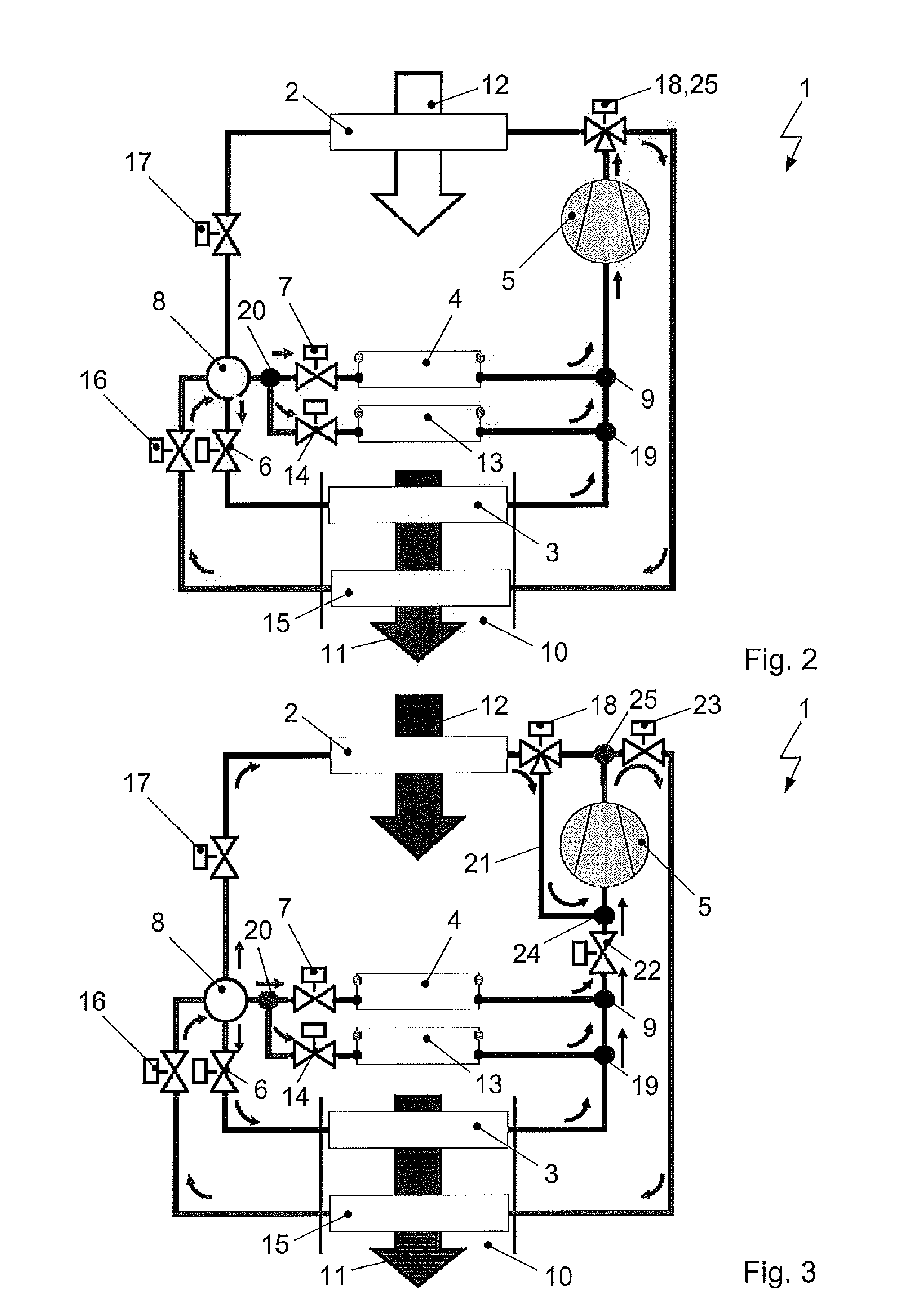Refrigerant circuit of an HVAC system of a motor vehicle
a technology of hvac system and refrigeration circuit, which is applied in the direction of refrigeration components, machine operation mode, light and heating apparatus, etc., can solve the problems of developing and dissipating heat, affecting the comfort of vehicles, and no longer available waste heat for heating the interior of vehicles, etc., to achieve the effect of improving efficiency, improving performance and li
- Summary
- Abstract
- Description
- Claims
- Application Information
AI Technical Summary
Benefits of technology
Problems solved by technology
Method used
Image
Examples
Embodiment Construction
[0056]The following detailed description and appended drawings describe and illustrate various embodiments of the invention. The description and drawings serve to enable one skilled in the art to make and use the invention, and are not intended to limit the scope of the invention in any manner. In respect of the methods disclosed, the steps presented are exemplary in nature, and thus, the order of the steps is not necessary or critical.
[0057]FIG. 1 shows a refrigerant circuit 1 as primary circuit with, in the direction of flow of the refrigerant, a compressor 5, a condenser 2 for direct heat transmission from the refrigerant to the ambient air 12, a collector 8, a first expansion valve 6 and an evaporator 3 for directly supplying heat from the fresh air to be conditioned for the vehicle interior to the refrigerant. In the direction of flow of the refrigerant between the connection point 8 established as collector 8 and an entering point 9 a further evaporator 4 with upstream expansi...
PUM
 Login to View More
Login to View More Abstract
Description
Claims
Application Information
 Login to View More
Login to View More - R&D
- Intellectual Property
- Life Sciences
- Materials
- Tech Scout
- Unparalleled Data Quality
- Higher Quality Content
- 60% Fewer Hallucinations
Browse by: Latest US Patents, China's latest patents, Technical Efficacy Thesaurus, Application Domain, Technology Topic, Popular Technical Reports.
© 2025 PatSnap. All rights reserved.Legal|Privacy policy|Modern Slavery Act Transparency Statement|Sitemap|About US| Contact US: help@patsnap.com



